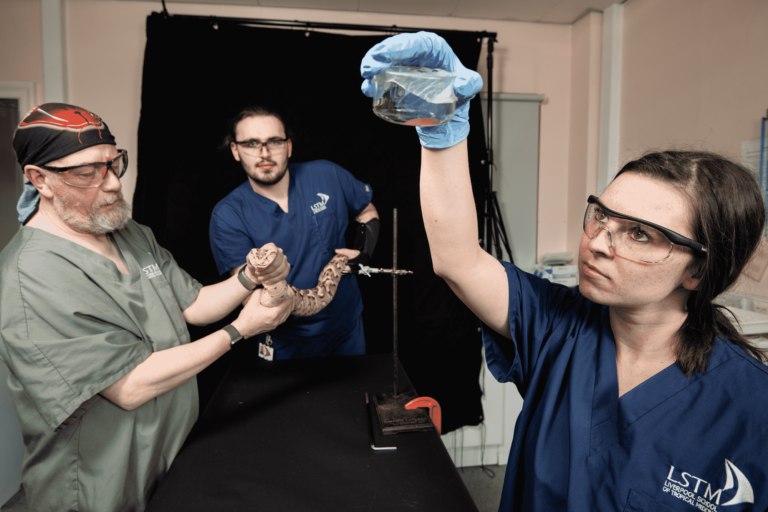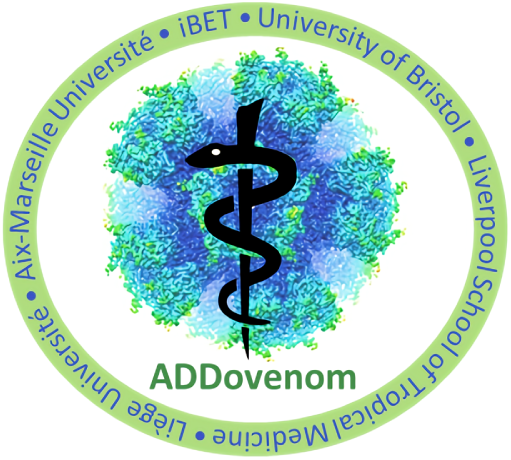For our Researcher Spotlight features, we interview members of the ADDovenom research team, to find out about their interests, their contributions to the project, and their hopes for the future of venom research.
Here, we speak with Becky Edge, a Postdoctoral Research Assistant in the Centre for Snakebite Research and Interventions at Liverpool School of Tropical Medicine.
Can you tell us briefly about your own research interests and background?
After my PhD in lung immunology, I obtained a role in the Centre for Snakebite Research and Interventions (CSRI) at Liverpool School of Tropical Medicine. I saw this as an opportunity to broaden my skill set in an interesting and neglected field, which still had large immunological relevance as the gold standard treatment for snakebite is an antibody-based serotherapy. My research interests include the rational design and selection of immunogens to improve antivenom efficacy, as well as the immediate to short term immunological consequences of snakebite.
When did you first become interested in venom research?
I became interested in venom research in 2020 after obtaining a research assistant position on a project at the CSRI to analyse samples from venom-immunised cows and camels. From here, my interest and understanding of the field really bloomed and I now enjoy applying my new knowledge and skills to furthering research into effective snakebite treatments.
What are your key responsibilities in the ADDovenom project?
Performing functional assays including the setting up of a disintergrin assay which is new to the CSRI functional portfolio, and assisting with in vivo experiments to test the neutralising capabilities of the ADDomers and ADDobodies designed and provided by our project colleagues.
What do you hope will be the main outputs from your work on ADDovenom?
It would be fantastic if we can show neutralisation of venom by the ADDomers and ADDobodies are as effective as current commercial antivenoms, but hopefully they will be even better! However, this new therapy offers the potential to reduce many of the adverse events seen after administration of traditional antivenoms, so even comparable neutralisation during in vivo studies may demonstrate serious improvements clinically.
Can you tell us of one recent development in the world of venom research that has interested you?
In 2018/19, Guillermo de la Rosa and colleagues demonstrated the utility of a consensus alpha-neurotoxin to generate antibodies against a broad spectrum of elapid snakes. The success of these studies really interests me, and trying to apply this concept to other toxin families is a primary research interest of mine.
Do you have a favourite snake – if so, which one, and why?
I would really struggle to pick just one, and the reasons tend to depend on whether I consider this question from a research perspective or not. Venoms from elapid snakes, such as Naja nigricollis (black-necked spitting cobra), have been a favourite research focus, but I do have a soft spot for the colouration and patterns – and sassy personalities – of the Bitis species.


